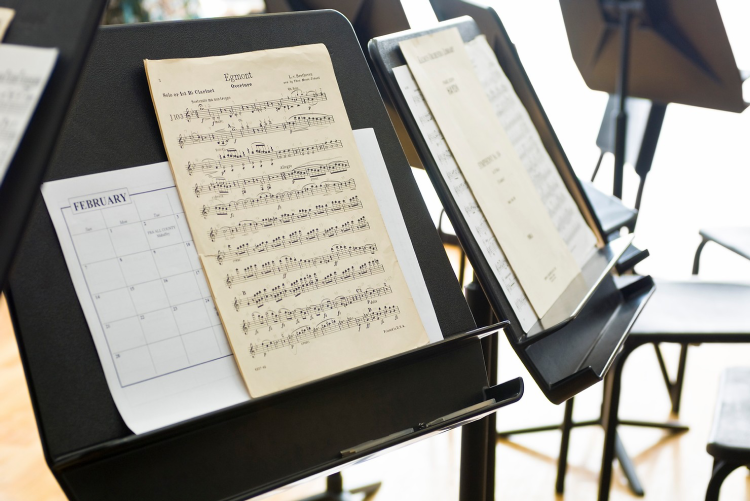Understanding the Major Scale in 5 Steps
Spelling scales, in general, is a great exercise to help improve your understanding of music theory and I think it’s important for anyone picking up an instrument to think of the major scale as “home base” for all music in a sense.
Every chord and scale in some way shape or form is an adaptation of this collection of notes and understanding a major scale’s construction can be used as a “measuring stick” to determine different types of chords and scales.
I remember starting out in my music theory studies feeling totally lost and completely overwhelmed with both the new numerical and grammatical concepts being introduced with learning this new language. As a result, I developed my own
personal guidelines to help make sure that I would never get spelling a scale wrong.

Anyway, here are my 5 rules for making sure you spell them correctly.
Rule #1 – Start on the root. End on the root.
So what is the root note?
The root note is the first note in the scale. This note is what gives the scale its name.
For example, let’s take a look at a C major scale.

The C major scale has the root note of “C”. It is the note that defines the scale and gives the scale its name.
The root note is also found in any chord as shown with this C major triad.

Rule #2 – All 7 letters of the musical alphabet have to be represented in the scale.
Let’s go back to that C major scale.

There’s a couple of things to notice right off the bat. First, notice how there are 7 different notes in the scale. It is important to remember that every natural major scale in all 12 keys contains 7 notes. No more, no less. Another important thing here to notice is how all of the notes are laid out in alphabetical order. It is the
same structure for every single major scale regardless of what key you are in and regardless of what note you start on.
In C major, we begin our scale starting on the root note “C” using each of the 7 letters in the musical alphabet until we reach the root note again.
Rule #3 W-W-h-W-W-W-h

In music, it is the space in between the notes that defines the sound of a particular chord or scale. The name that we give this space is called an interval and to be more specific, an interval is a measurement of the distance between two notes. For the sake of this article, I’m only going to talk about intervals in the sense of
whole steps and half steps just to keep it simple.

Let’s say you’ve got your guitar and you’ve fretted the 5th note “A” on the low “E” string. If you want to ascend up a half step, simply slide your finger up one fret. If you want to ascend a whole step, slide your finger up two frets.
Easy, right?
Now it’s important to understand that all natural major scales share the exact same pattern of intervals or “intervallic pattern” if you’re feeling fancy. This pattern is the same for every natural major scale in all 12 keys and will serve you well if you take the time to memorize it.
The pattern of whole steps and half steps goes as follows…
Whole step, whole step, half step. Whole step, whole step, whole step, half step.
We abbreviate this by using W-W-h-W-W-W-h.

Understanding this pattern is essential for making sure that the scale starts on the root, ends on the root, and follows alphabetical order.

Okay, I think I’ve made my point. Moving on!
Rule #4 – Sharps (#’s) and Flats (b’s) cannot co-exist in the major scale.
Up until this point, we’ve been looking at a scale that uses natural notes exclusively meaning no sharp or flat notes.
Let’s take a look now at a B major scale.

Notice how B major contains five sharp notes.
These sharp notes are known as accidentals which means that they go by another name.
For example, C# is the same note as Db, F# is the same note as Gb, A# is the same note as Bb and D# is the same note as Eb.
So why not just use those flat notes in the scale right? They sound the same. They just have different names! What’s the problem?
The problem is that if we were to change one of the sharp notes to a flat note, the alphabetical order gets interrupted in the scale.

This ties in with rule #5 which is (cough cough ahem)
Rule #5 – Note names cannot repeat in the scale
Rules #4 and #5 kind of coexist in the same space but if I’m ever spelling major scales and I catch myself writing an E to an E# then I know this is wrong for two reasons.
Anyway, those are my five rules to help keep me in between the lines when spelling major scales. I hope you found this to be useful. If you’re still a bit confused, I put together a video going a bit more in-depth that you’re welcome to check out.
Thanks for reading!
About PIVODIO™ Coach Aaron Cloutier
Aaron Cloutier is a songwriter, producer, and music educator with over 15 years of experience in the music industry. As a graduate of the Conservatory of Recording Arts and Sciences, Aaron has incorporated his education in audio engineering into his songwriting and production experience, allowing him to work with artists ranging from Ill Nino to the late Sir Christopher Lee. Aaron’s ability to write, record, and produce has also allowed the opportunity to compose music for audio-based companies ranging from Korora Audio, Redwirez, and Ugritone. He lives for the creative process and is eager to share his experience with a new crop of musicians.




Leave a comment